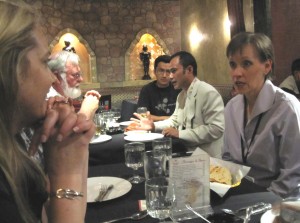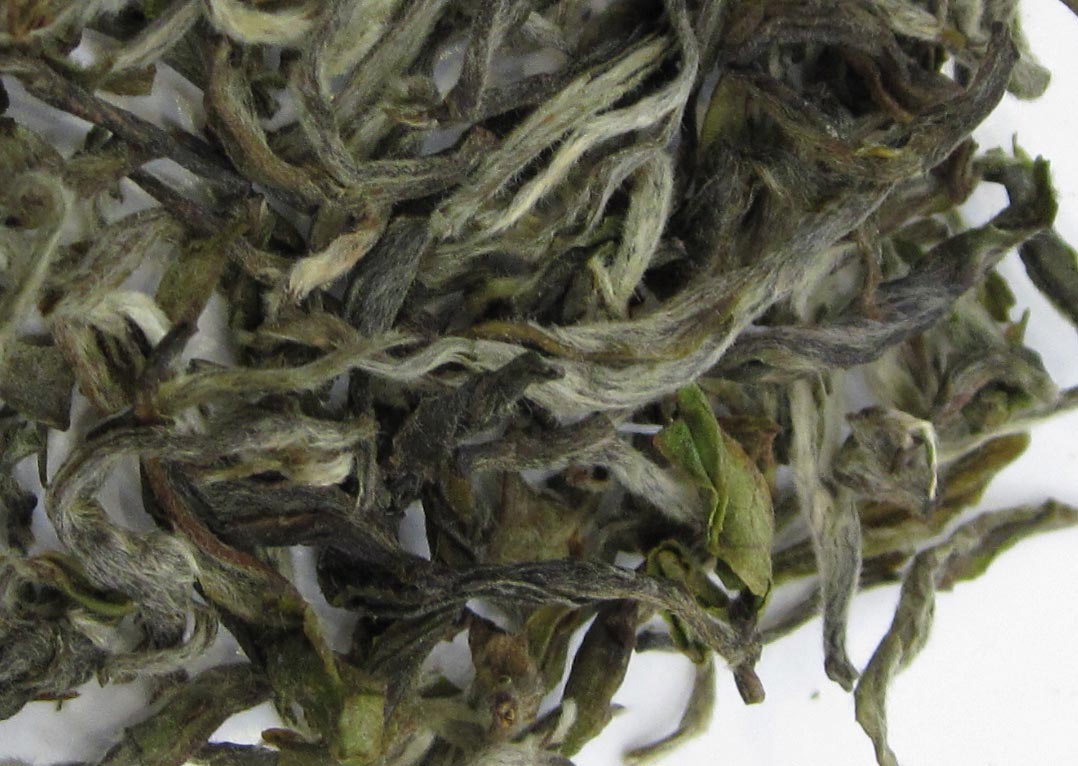Saturday June 25th
I got off to a late start, but managed to catch most of Chuck Underwood’s session on Marketing to Generation X. His speech last night was a highlight of the Conference. He has done deep research on the subject and everything he says makes the glass clearer and the picture come into focus. There were many Aha! moments. Here’s a distillation of his message.

Marketing to Generation X: The “Island Generation”
- Generation X is the most elusive generation, born 1965 – 1981.
- During their childhood, in America, 8 out of every 10 Gen X children in the classroom came from broken homes
- The raising of those children was essentially done by the mother who had primary custody of the children.
- Boys in particular felt the brunt of this arrangement, not having enough time with their Dads and being raised in many cases in an all female environment.
- “Title IX” of the U.S. Education Amendments in 1972 was introduced giving girls equal opportunity for participation in school sports, empowering them to become strong and independent. Budgets that had been allocated for boys sports in the past were cut back to literally create a level playing field.
- Most nights, kids did not have a meal together with the family at the table.
- There was an unprecedented change in family life as Mom pursued her career.
- Gen X was the first generation of latchkey kids.
- Even if their parents weren’t divorced, they were time-poor.
- Raised by young “Silents” ( born in the mid- 1930’s – early 40’s) or older “Boomers” (1945 – 1950) who released the grips on their kids, this generation doesn’t have a sense of right and wrong, good and bad.
- They lived in a time of mobile society where people were constantly moving.
- Their classroom performance was poor and crime increased. To quote James J. Harvey, author of the Educational Commission’s Report in 1983 “the educational foundations of our society are presently being eroded by a rising tide of mediocrity”
“In order to market to this generation you have to understand their core values”
- Independence – “Island Generation”
- Emotional distance – Cynical
- inclusive, non-racist
- Confident female generation
- Males trying to find their masculinity
- Get it right with raising their children “I’m gonna be there for my kid”
- Demand quality and “What’s in it for me?”
Underwood asked the 40 or so people at the session how they might market to Gen Xers, in particular males. Here were some of the suggestions:
- find a fun side to tea that could involve the whole family.
- Urban decor or leather and wood to appeal to men
- Teach Common Courtesy Classes ( Gen X missed out on this at home)
- Tea pairing, Tea and Cigars
- They are the Starbucks generation, you have to lure them away from coffee or create an environment where they can easily pickup a tea without a lot of fuss.
- Events for grandparents and children.
From the comments I heard as we were exiting, people seemed to be relieved to have information that added insights to a Generation that had frustrated and puzzled many. What is really clear is that Generation X is a product of our vastly changing social history in the 70′ and 80’s. Now we have some clues. For more information read Chuck Underwood’s “Generational Imperative”
Break Time
I met up with Ana Maria Salazar of Toronto and Vikram Sainadh of Tea Garage also based in Toronto, both students in Toronto’s GBC Sommelier program and Del from Vancouver’s Sommelier program. All are developing Tea businesses, online or bricks and mortar and in Ana Maria’s case working to develop a tea business with her contacts in Columbia. We talked about business, tea travel and how the tea community is all about partnering and sharing. It was refreshing.
Back to the Exhibitors
I let myself loose on the exhibit floor and came across these interesting booths:
- Tea Source featured some beautiful new teas. They are promoting a “Dark Tea” which looks like Pu-erh, but is much lighter in taste. The cup I tasted was Dark Rose Tea. I have some samples and will be reviewing as soon as I’m back home.
- Harrington Estate (check out the fantastic video on their website) & Acton USDA Certified Organic Teas from Sri Lanka. Most of their teas are grown in the Uva and Dimbula Highlands of Sri Lanka. They didn’t have teas to taste, but I will return tomorrow for some samples to review back in Toronto.
- At Virginia Dare, I learned that many US companies have, over the years used the historic name Virginia Dare, but this one started out as a winemaker in 1835 Brooklyn. They produced wine until the depression when they decided to use their unsellable wine to make alcohol- extracted culinary enhancers. They are a large company now making syrups, flavours, etc. They offered an iced Lime Green Tea which I found quite tasty and refreshing. Their market is more commercial, they don’t carry any loose leaf tea, but it was interesting hearing Anton speak of the mysterious disappearance of their namesake, Virginia Dare and her early community over 400 years ago
- Tea Tangent of Kempton, Pennsylvania displayed some beautiful tea accessories crafted of sustainably harvested wild cherry. There were “tea nests”, tongs and “bee stick” honey dippers – 10% of the “stick” sales goes to research and education on Colony Collapse Disorder.
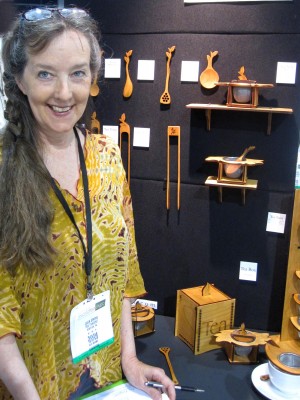
Fine Korean Greens
I tried 2 green teas from South Korea. The first was Sejak from Osulloc, a Jeju Island tea garden that has been producing teas since 1979. Their website is exquisite! I tasted their Organic Sejak which was picked in the Gokwoo season around April 20th. The preparation involves a blending of steamed and roasted young leaves. My tasting experience was brief, but I was able to immediately notice a softness and gentleness to the taste. Have samples, will review.
The second green tea was from Vision 1040 Co. Ltd. They offered me an East of the River, Jukrocha from Hadong province. Prepared by the Cho Tae-Yeon family it undergoes a traditional stir frying method which halts the oxidation and seals the flavours. I was impressed with its richness and again a softness that seems to be a characteristic of Korean green teas. More to come on this one.
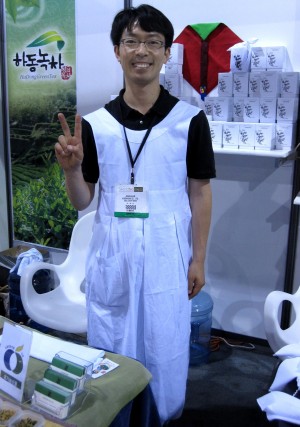

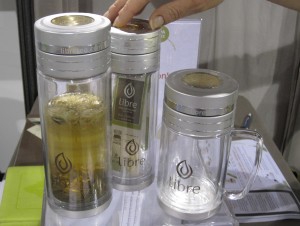
Himalayan Teas
I was invited to attend a presentation by the Himalayan Tea Producers Cooperative Ltd of Nepal. Here are some interesting facts about the Himalayas:
- A landlocked country nestled between China and India
- As well as Mt. Everest, Nepal includes eight of the world’s 10 tallest peaks and 240 peaks over 20,000 feet.
- There are more than 50 diverse ethnic groups speaking over 126 different languages.
- Nepal has 136 different ecosystems representing every climate zone in the world and boasts 10 World Heritage Sites.
- At the foothills of Nepal’s majestic mountain ranges lie tea gardens that produce premium highland tea that is exported to specialty markets all over the world.
- Nepal’s tea gardens are nurtured by 18,000 small-scale tea farmers.
- They produce 2.5 million kilograms per year of Orthodox tea, most of it for export
- They grow the “China plant”, Camellia Sinensis Sinensis which loves to be grown at cooler temps and higher elevations
- Invading insects are not as big a problem for tea that is grown at such high altitudes, 7.500 above sea level
- Most of the farms are awaiting certification or are already certified Organic. They have adopted their own “Code of Conduct”

From Farmer to Factory and Now, Marketplace
Mr. Bushan who had organized the event, spoke eloquently about the plans and dreams of farmers and factory owners. Their independent operation has managed to stay clear of the shaky politics of the region. They are self-sufficient and do not ask for handouts from the government.
Mr. Udaya Chapagain, chairman of the Himalayan Orthodox Tea Producers Association also spoke about some of the initiatives that his factory has implemented. Farmers do not have access to fertilizers so HOTPA has been providing the farmers with cows to create manure and composters to produce a rich addition to the soil. They are also helping farmers get their Organic Certification.
This is a very new and exciting region. TEA LOVERS EVERYWHERE – you must ask your retailer to start carrying Himalayan Tea. I have tasted the Green 2nd flush, Black Curl, 3 SFTGFOPs (Super Fine Tippy Golden Flowery Orange Pekoe) They use the British Grading System. The final taste was a White tea grown in the Shangri-la region which in my estimation could stand up to any fine white tea world-wide. All were wonderful. The bushes are relatively young 8 – 20 years. A tea bush reaches it’s peak for flavour around 30 years so they seem to be on track. I will be visiting their booth on Day 3 and will give you future reviews of the samples that I am bringing home.

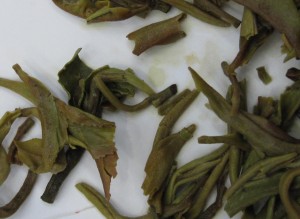
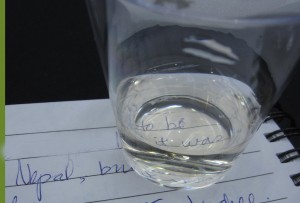
The day ended with an invitation to join the Himalayan delegation at Gandhi restaurant. It was a lovely evening of good food, conversation and many toasts! We learned of the labour of love and commitment from this community of remarkable people on the other side of the planet. I will visit their farms one day. Look for more posts in the future about this unique growing region.
